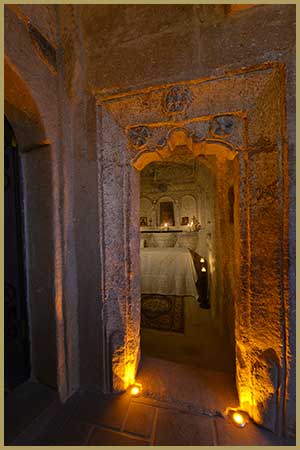

The SUNAK is the name given to the small churches built for worship with the simplest definition. Sometimes there are small places of worship reserved for the sake of a saint in large churches, especially in rural areas and small places, on the side of the roads, or in prayer and candle burning to meet the religious needs of the owner of a house.
The wealthy of the Greeks living together with the Turks built small chapels (church) inside their houses. The family, as they used to worship these chapels comfortably, also performed religious marriage ceremonies among their relatives in these holy places. According to Riviat, "Pappas" who come to this house for worship or religious marriage ceremony are welcomed in the room adjacent to this chapel (church).
- Old Greek Chapel
- Old Greek Church
- Old Greek Temple
The name of Altar, who gave us the name of our hotel in Cappadocia, is named after this noble family, which is used only in the family and built as a noble family who lived in this precious mansion.
It is the private cave place of Sunak Hotel which is preserved up to the day-to-day chapel carved into rock. The Old Chapel entirely features the characteristics of the traditional Greek architecture of the period.
In Ürgüp, the Sunak carved into the natural tuff rock is entered with a stone arched door. The space with square plan is illuminated by two small windows.
The ceiling is processed in such a way that it will form a wide frame in the east and a small dome in the east after a straight section in front of the door. On the east wall is a one-piece altar carved into natural rock.
This wall shows an arrangement as if it were entirely in the Cappadocia Territorial churches. The wall is arranged in a triple niche. It is machined deeper in the middle than the arched niches.
There are altar tables in front of the niches in the form of a half circle. Icons were on the niche. The altar table is used for burning candles and so on.
The stylistic features of the Altar (Old Chapel) show that this part of our hotel was built in the 19th Century.
Adil Özme, Art Historian - Ankara, 21.01.2015